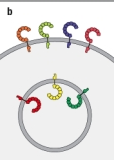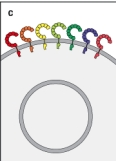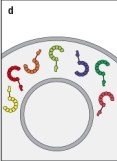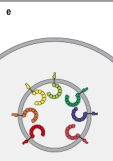As a family, TLRs can recognize PAMPs associated with a broad array of different pathogens, including bacteria, viruses, and fungi. Patients with a specific susceptibility to herpesvirus infections have a defect in their ability to respond to viral nucleic acids using TLR-3, TLR-7, or TLR-9, even though these proteins are expressed in the patients' cells. Analysis of the TLRs in macrophages and dendritic cells from these patients would likely show which of the arrangements in Figure?
A) 
B) 
C) 
D) 
E) 
Correct Answer:
Verified
Q10: Mycobacteria are intracellular pathogens that have adapted
Q11: RIG-I like receptors (RLRs) such as RIG-I,
Q12: Most normal tissues contain resident macrophages, and
Q13: Stimulation of the nucleic acid sensing
Q14: Signaling through the Drosophila Toll pathway is
Q16: The NBT (Nitro Blue Tetrazolium) test is
Q17: The first pattern recognition receptor (PRR) important
Q18: Many of the inflammatory mediators produced by
Q19: The inflammatory response is characterized by four
Q20: Macrophages express multiple types of receptors on
Unlock this Answer For Free Now!
View this answer and more for free by performing one of the following actions

Scan the QR code to install the App and get 2 free unlocks

Unlock quizzes for free by uploading documents